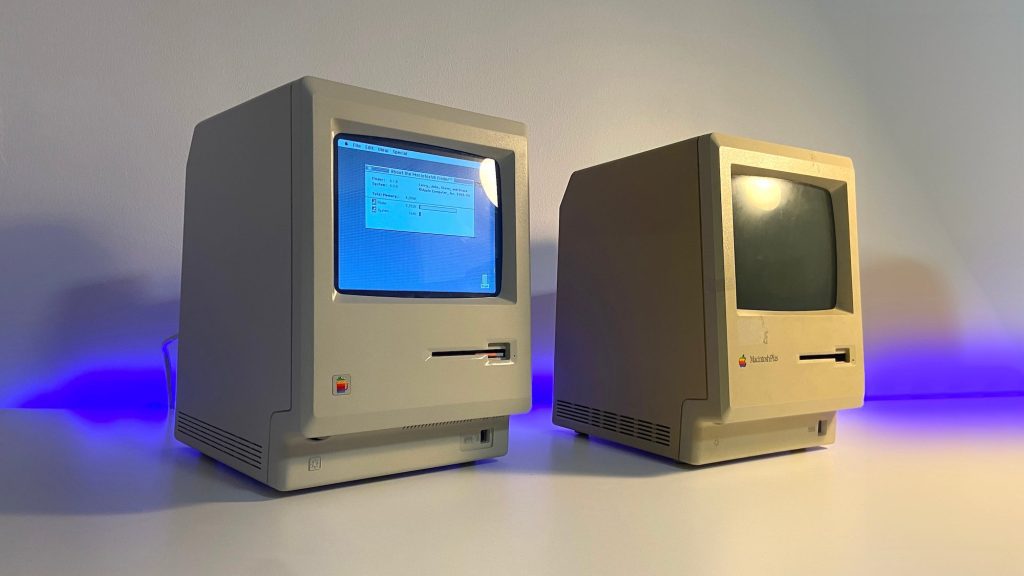If you have about 40 free weekends, a 3D printer, deep knowledge of old computer programming, soldering skills, and a lot of patience, you could own a “Brewintosh Plus” like the original Macintosh Plus from Apple.Brewintosh Plusclone of Apple’s Macintosh Plus computer system. completely working clone of Apple’s iconic Macintosh Plus computer system.
It's hard to believe, but back in 1986, having 1Mb of RAM was a big deal. The Mac Plus was a powerful machine at the time. It was Apple’s third Macintosh release and was very successful. It held the record as Apple’s longest-produced Macintosh model until 2018, with regular updates to its operating system until 1996.
The Mac Plus is an important piece of tech history, but finding one in good condition, let alone fully functional, can be tough after almost 40 years since it was released. However, for collectors like Kevin Noki, the appeal of working with this iconic, retro hardware is too strong to resist. But getting a Mac Plus in places like Germany can be even more challenging.
After searching eBay for some time, Noki finally found and bought a worn-out 1Mb Macintosh Plus. Despite having a broken power supply and missing floppy disk drive, one could technically emulate the original computer system just by installing a Raspberry Pi. But Noki wanted a more challenging project. could Macs are better than PCs for video gaming using emulators. Here’s how to set yours up.
[Related: Macs are better at video gaming (emulators) than PCs. Here’s how to set up yours.]
Instead, Noki chose to use his vintage tech as a template for something more accurate but complex: He built his Mac Plus computer from scratch. own Mac Plus computer from the literal ground up.
“We are talking a properly sized, colored, and textured box, running on wall power, accepting 3.5-inch disks, compatible with telephone-cord and ADB Apple keyboards and mice, with a screen dimmer, and making the startup sound (the beep, not the chord),” Ars Technica summarized earlier this week. Ars Technica summarized earlier this week.
But even that list of features doesn’t fully capture Noki’s journey. More than 40 individual parts were measured, converted into production specs through AutoDesk Fusion 460, and 3D-printed to create exact replicas of the desktop’s various components. Then there was modifying a USB floppy drive reader to use an Arduino-controlled motor that Noki programmed himself, installing the floppy drive, as well as soldering and wiring internal speakers, coloring external parts to match the original Mac Plus case color scheme, and even making replicas of all its original labels, stickers, and raised-text stereotypes. However, Noki doesn’t hesitate to pinpoint the most difficult part of the entire process. AutoDesk Fusion 460AutoDesk Fusion 460
“Honestly, everything was somewhat tough,” he tells PopSci, although he believes that figuring out how to use an emulator to interact with the rebuilt hardware was the biggest challenge. “For example, determining when to eject the floppy disk was particularly tricky, especially given my limited programming skills,” Noki says.
“Limited programming skills” is quite modest after watching Noki’s nearly hour-long YouTube explanation, which is truly worth watching in full. Now that the job is finished, the designer states PopSci he has gained an even greater admiration for emulator programmers, “especially the team responsible for the Mini vMac,” which replicates various Macintosh OS versions.
“Their dedication not only safeguards computing history but also ensures its availability for future generations, and for that, I’m extremely grateful,” he says.
That gratitude can certainly be extended to Noki, whose Brewintosh Plus and accompanying step-by-step guide now makes its own distinct contribution to preserving and making computing history accessible.









